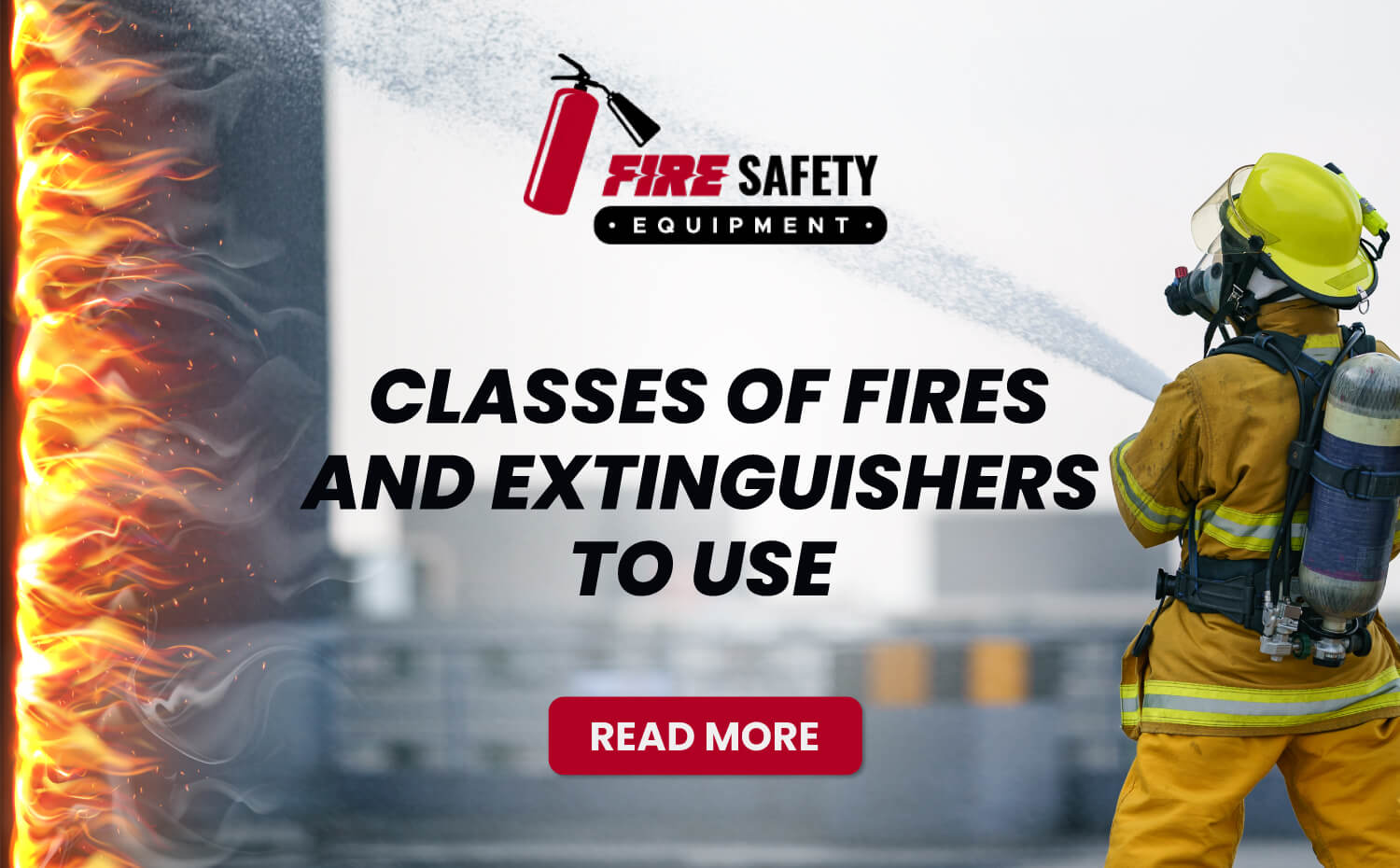Classes of Fires and Extinguishers to Use
Posted by Fire Safety Equipment on 12th May 2022
Classes of Fires and Extinguishers to Use
There are particular types of fire extinguishers used for many classifications of fire. Depending on the type of material the fire burns, a corresponding fire extinguisher extinguishes it. Knowing what kind of fire extinguishers to use for a particular fire is something that any person should understand because fire is such a dangerous force if not contained immediately.
Understanding Fire
Fire has three components; Oxygen, Fuel, and Heat. You may recognize this as the fire triangle for anyone who underwent a fire awareness orientation of some sort. Fuel is a flammable substance that catches fire when exposed to enough heat to reach its ignition temperature, while oxygen creates continuous combustion that sustains the fire.
Removing one of the three components can effectively kill the fire. What a fire extinguisher does is remove at least one of these components to extinguish the fire.
Classes of Fire:
Class A: Fires that involve solid materials such as paper, wood, cloth, etc.
Class B: Fires that have flammable liquids such as gasoline, diesel, paraffin, or petrol.
Class C: Fires that involve flammable gases.
Class D: Fires that involve metal
Class K: Fires that involve cooking fats, greases, and oils.
The Different Kinds of Fire Extinguishers
Water Extinguishers
The most cost-effective way to put out Class A fires is water. There are four types of water extinguishers used to combat fire: water spray, mist fog, water with additives, and water jet. You can also use water to cool surrounding areas to effectively negate heat that could cause the fire to spread faster. They all have a red label.
*Water jet extinguishers cool the burning materials and avoid re-ignition by spraying a water jet at them. Never use it near live electrical equipment.
*Water extinguishers with additives are those that have foaming chemicals added to them. A small-scale extinguisher can perform with the same efficacy as a large one due to the added substances.
*Water spray extinguishers or sprayers are present in most buildings as a way to prevent fire. It makes use of tiny sprays of water droplets to cover a large area in an instant. This action prevents the spread of fire and, in time, can extinguish it.
*A water mist fire extinguisher holds deionized water in a spray that creates a fine mist curtain and discharges it. The water droplets are tiny in that they leave no trace and do not saturate the environment, despite being extremely powerful and effective at cooling and suffocating a burn.
Foam Extinguishers
Foam fire extinguishers are for class A or B fires. It is suitable for liquid fires since the foam can seal the surface of the burning liquid, preventing any flammable vapor from reaching the air and starving the fire of fuel. Foam extinguishers have a cream label and are never applicable for use in free-flowing liquid fires.
Powder Extinguishers
This extinguisher is applicable for Class A, B, and C fires. They are for use on fires involving electrical equipment. It does not cool the area, however, so there are still chances of the fire re-igniting. They are not recommended for use inside buildings because they can create a loss of visibility and cause breathing problems. They also have a blue label.
Wet Chemical Extinguishers
This extinguisher is for Class A, B, and K fires. It is common for commercial restaurants and kitchens that use various oils, lard, and fats. The substance instantly knocks the flames out, reacts with the oil to form a soap-like solution, and cools and seals the surface of the oil to prevent re-ignition. Wet chemical extinguishers have a yellow label.
Carbon Dioxide Extinguishers (CO2)
Since CO2 extinguishers are safe to use on fires involving electrical apparatus, they are suitable for areas with much electrical equipment, such as offices or server rooms. They leave no residue compared to foam extinguishers. CO2 extinguishers put out flames by smothering them and cutting off their oxygen supply, making them ideal for Class B fires.
Fire Blankets
Fire blankets mainly protect against hot oil fires, such as those caused by frying pans or small deep fat fryers. They are also for extinguishing a fire that has started in someone's clothes. They work by suffocating the fire, preventing it from getting oxygen, and finally killing it.
Conclusion
Knowing how to combat fire is a responsibility for all who use it. All of humanity has harnessed fire for the benefits it brings, and it is one of the most beneficial forces since ancient times. If you need to learn more about fire prevention, consider getting the help or sound advice of a professional.
For your fire extinguisher needs, consult the professionals at Fire Safety Equipment. They can give you solid advice and explore other options that will fit naturally to your required specifications.
